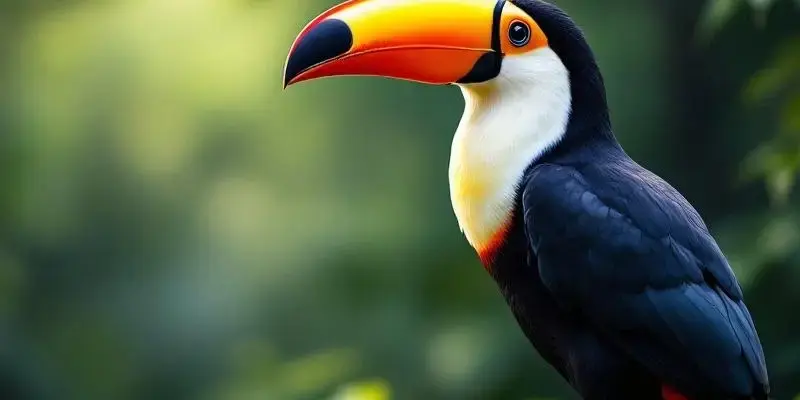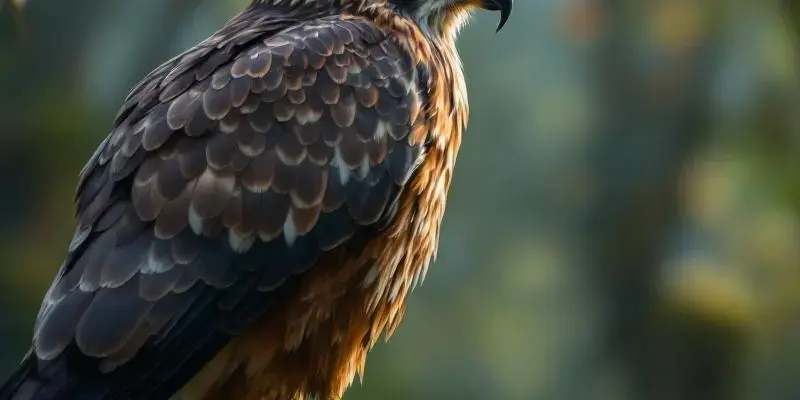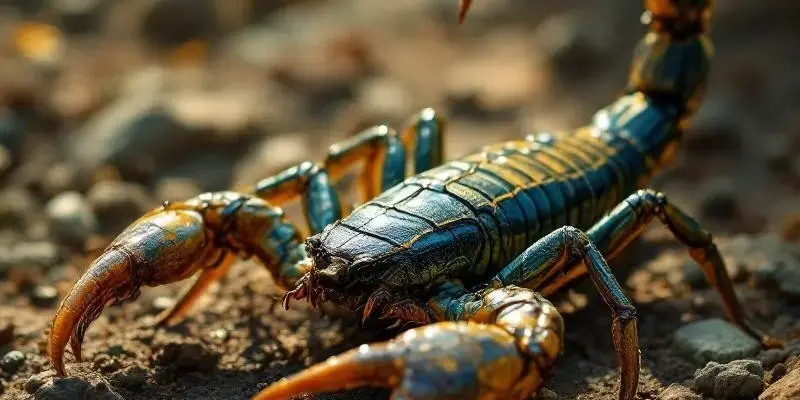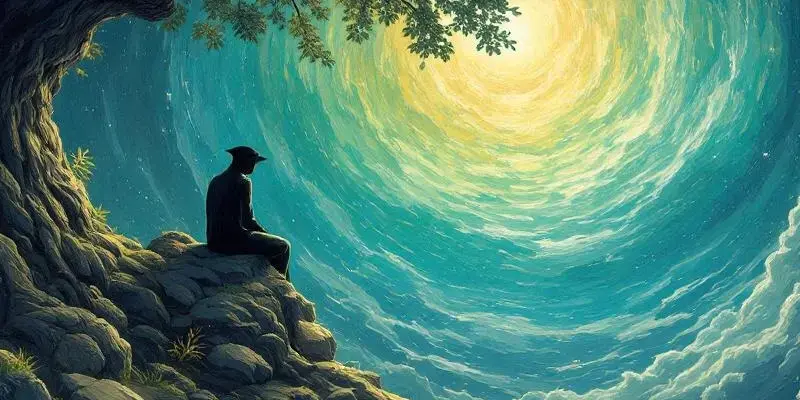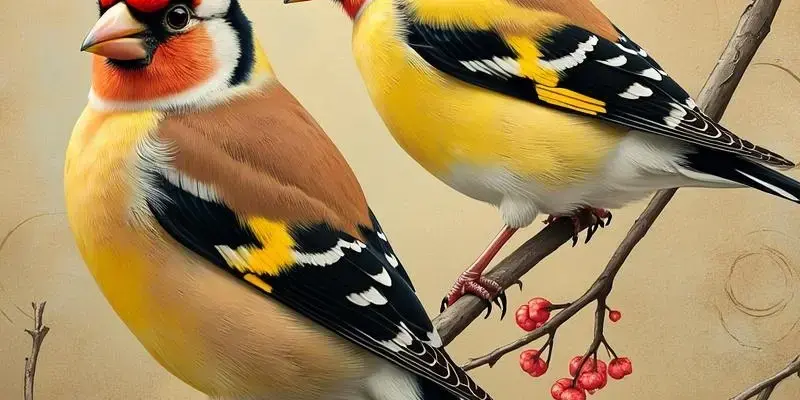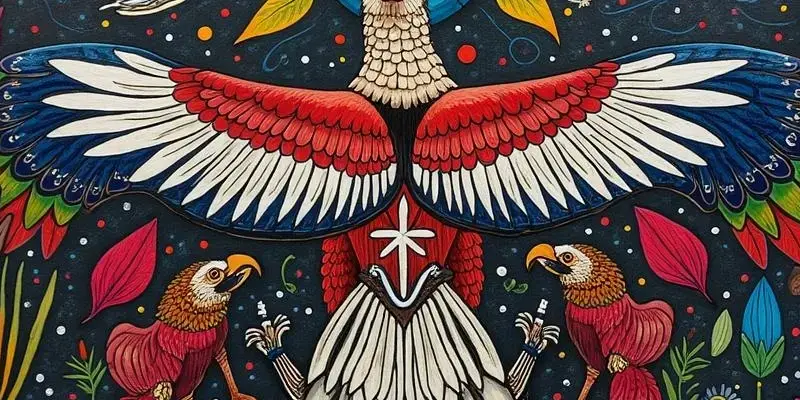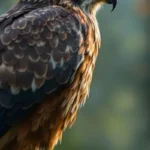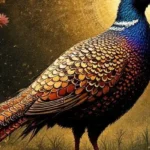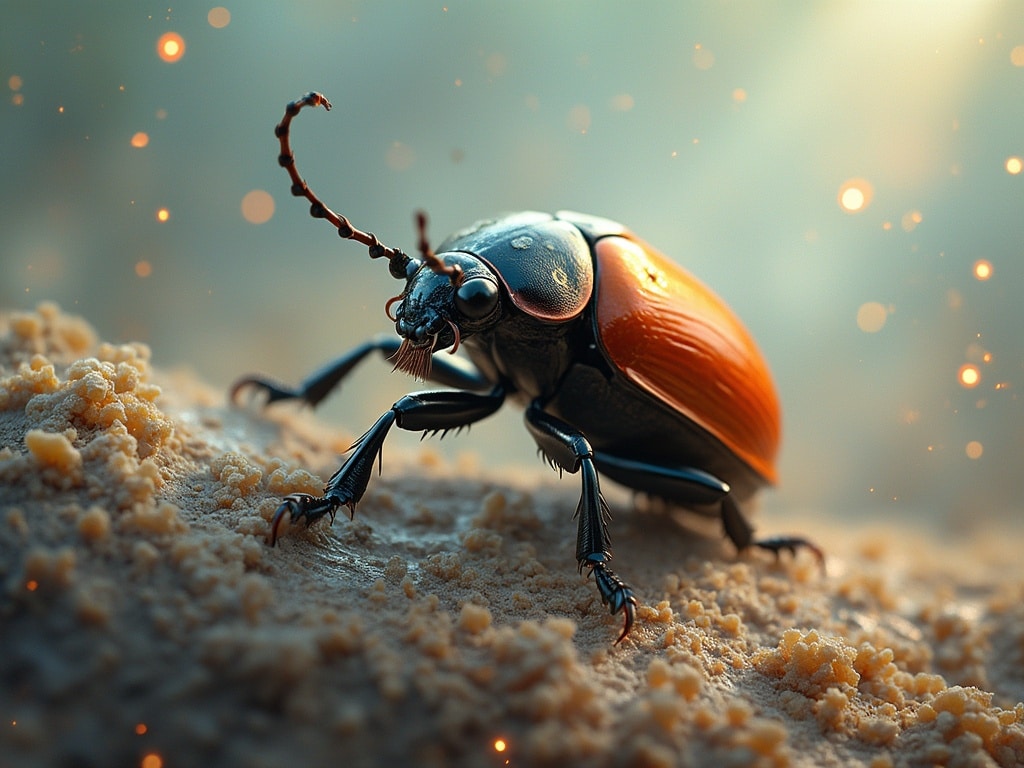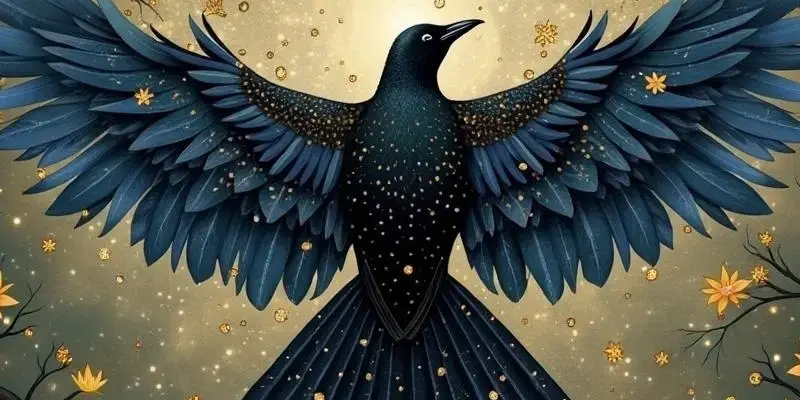Peacock spiritual meaning
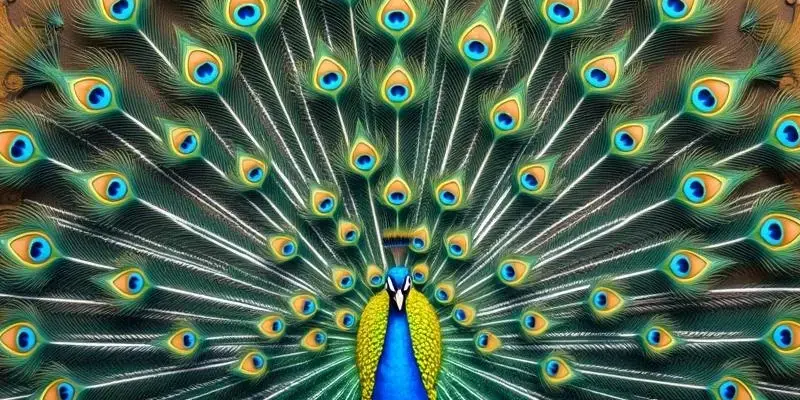
Peacocks transcend ordinary symbolism to become powerful bridges between earthly existence and divine realms across various cultures and spiritual traditions. Their iridescent feathers with distinctive “eye” patterns represent divine omniscience while their vibrant plumage supports chakra alignment and serves as a physical manifestation of spiritual awakening.
Key Takeaways
- Peacocks embody seven universal spiritual qualities: longevity, immortality, beauty, protection, love, divine connection, and awakening
- The eye-like patterns on peacock feathers symbolize divine omniscience and enhanced intuition
- In Christianity, peacocks represent resurrection and eternal life through their annual molting cycle
- Hindu traditions honor peacocks as divine vehicles for multiple deities including Lakshmi and Lord Krishna
- Buddhist philosophy views peacocks as symbols of transforming negativity into wisdom and spiritual resilience
The Divine Messenger: Universal Peacock Symbolism
Peacocks hold a unique spiritual position across cultures worldwide. Their significance extends beyond simple beauty, representing a powerful connection between our physical world and higher spiritual realms. Across diverse civilizations, peacocks consistently embody seven core spiritual qualities: longevity, immortality, beauty, protection, love, divine connection, and spiritual awakening.
The most captivating feature of these magnificent birds is undoubtedly their iridescent feather pattern. The eye-like designs represent divine omniscience in multiple spiritual traditions, teaching practitioners to develop perception beyond physical sight. This symbolism encourages the development of spiritual intuition and higher awareness. Their rainbow-colored plumage directly supports chakra alignment, with each vibrant hue corresponding to different energy centers in the body, making peacock imagery particularly effective for balanced spiritual awakening.
Resurrection & Rebirth: The Christian Peacock
Early Christian artwork features peacocks prominently as symbols of resurrection and eternal life. This association developed through natural observations that resonated deeply with Christian theology. The peacock’s annual molting cycle, where feathers die and regrow more vibrantly, perfectly mirrored the death and resurrection of Christ.
Ancient Greeks believed that peacock flesh didn’t decompose after death, further cementing the bird’s connection to immortality. The circular eye patterns resembling God’s watchful presence added another layer of spiritual significance. This symbolism appears strategically in early Christian iconography on tombs, thrones, and near the Tree of Life depictions.
The tradition traces back to biblical times—peacocks were imported to Palestine during King Solomon’s reign and gained spiritual importance long before becoming standard imagery in Catholic Church artwork. This historical context shows how deeply integrated peacock symbolism has been throughout Christian spiritual development.
Divine Companions: Hindu Peacock Traditions
In Hindu tradition, peacocks hold sacred status as divine vehicles (vahanas) for multiple deities. These associations create specific spiritual connections between peacocks and various aspects of divine energy. Lakshmi, goddess of wealth and prosperity, links peacocks to abundance and material wellbeing, while Lord Krishna’s peacock feathers connect the bird to divine beauty and grace.
The goddess Saraswati, who oversees knowledge and arts, partners with peacocks to represent creative inspiration and artistic expression. Kartikeya, the warrior deity, rides the peacock as a symbol of spiritual victory and overcoming obstacles. Hindu mythology suggests peacocks originated from the feathers of Garuda, the divine mythical bird servant of Lord Vishnu.
Peacock presence in homes and spiritual spaces is believed to bring blessings, positive energy, and represents cosmic order through its vibrant plumage patterns. This multi-layered symbolism demonstrates the peacock’s central importance in Hindu spiritual practice and iconography.
The Divine Messenger: Yoruba Peacock Story
One of the most compelling peacock myths comes from Yoruba culture in West Africa, where the bird serves as the sacred messenger between humanity and Olodumare, the supreme deity. This powerful tradition tells how the Orishas (gods) plotted against Olodumare, who responded by stopping rainfall, causing devastating drought.
The goddess Oshun voluntarily transformed into a peacock and flew toward the heavens despite the sun burning her skin and charring her feathers. Her perseverance and compassion moved Olodumare to restore rain to the earth, and he rewarded her with supremely beautiful feathers and the official title of personal messenger.
This story emphasizes that true beauty comes from determination, compassion, and persistence rather than mere physical appearance. It teaches that divine connection requires character transformation and service to others, values that transcend superficial beauty.
Transforming Poison to Wisdom: Buddhist Peacock Symbolism
Buddhist philosophy associates peacocks with spiritual transformation and the conversion of negativity into wisdom. The peacock symbolizes extraordinary purity because it reportedly consumes poisonous plants without harm. This represents the practitioner’s ability to transmute life’s difficulties into spiritual growth and enlightenment.
Unlike traditions emphasizing external beauty, Buddhism focuses on inner transformation and resilience. The peacock teaches that challenges can become wisdom through proper spiritual practice and mindful awareness. In Buddhist cosmology, the peacock appears as a steed of the god Kumara, adorning the western palace throne and representing beauty alongside spiritual richness.
This perspective offers a particularly valuable lesson for modern spiritual seekers: difficulties can be transformed into wisdom rather than simply avoided. The peacock thus becomes a powerful symbol of spiritual alchemy and the practitioner’s capacity to find growth through life’s challenges.
Divine Beauty: Islamic and Sufi Peacock Tradition
Islamic tradition regards the peacock as a symbol of divine beauty and creation’s majesty. Its intricate and colorful feathers testify to Allah’s creative power and artistic perfection. This appreciation for the peacock’s natural splendor reflects Islam’s recognition of beauty as a divine attribute worthy of contemplation.
In Sufi mysticism specifically, the peacock functions as a metaphor for the soul’s journey toward enlightenment. Its iridescent plumage, which changes colors depending on light angle, represents spiritual transformation and evolving perspectives occurring along the mystical path. This shifting quality mirrors the Sufi understanding of reality as multifaceted and dependent on one’s spiritual viewpoint.
While Christianity focuses on the peacock’s resurrection symbolism, Islamic tradition emphasizes how peacocks display the perfection of divine creative expression. This difference highlights how spiritual traditions can derive distinct meanings from the same beautiful creature while maintaining respect for its sacred nature.
Tribal Reverence: Peacock in Indian Cultural Traditions
Several Indian tribes maintain profound spiritual connections to peacocks that go beyond general cultural appreciation. The Santhal tribe identifies as descendants of the peacock god Moreko, making peacocks sacred ancestors in their lineage and identity. This direct familial connection creates a particularly intimate spiritual relationship.
The Gond tribe performs elaborate peacock dances during religious ceremonies to please deities and maintain cosmic harmony. The Maria tribe (a Gond subgroup) incorporates peacock feathers into funeral rituals, placing totems near graves to help souls transcend the cycle of birth and death, demonstrating the bird’s connection to spiritual transition.
The Warli and Bhil tribes avoid stepping on peacock tracks and conduct ceremonies around them out of deep respect for the spiritual significance these markings hold. These tribes widely believe in the healing power of peacock feathers and the bird’s ability to transcend ordinary time. The variety of practices demonstrates how deeply peacocks are integrated into spiritual identity across Indian tribal cultures.
Ancient Reverence: Historical Peacock Significance
Peacocks trace their cultural importance to biblical times, appearing as treasured possessions in King Solomon’s court. This historical reference places peacock reverence thousands of years into human spiritual history, showing their longstanding significance. Alexander the Great, during his Indian campaigns, found peacocks “in vast numbers” on the Hyarotis River banks and was so impressed by their beauty that he forbade anyone from killing or disturbing them.
In ancient Egypt, the peacock was associated with the sun god and the eye of Horus, gaining additional reverence because it destroyed poisonous snakes. This practical benefit of snake control enhanced its spiritual significance, demonstrating how practical and spiritual values often intertwined in ancient cultures. This historical perspective shows how peacock reverence spans thousands of years across disconnected civilizations, suggesting a universal human response to their beauty and presence.
Colorful Messengers: Peacock Color Symbolism
Different peacock color variations carry distinct spiritual meanings that can be applied in specific meditation and manifestation practices. Blue peacocks direct focus toward mystical and esoteric matters, connecting to throat chakra communication and spiritual truth. Their cool blue tones relate to clear expression and higher awareness.
White peacocks appear ethereal and suggest angelic allies, representing purity and spiritual transcendence beyond ordinary consciousness. Their rare appearance makes them particularly powerful symbols of unique spiritual gifts. Green peacocks symbolize health, renewal, and good fortune, connecting to heart chakra healing and abundance energy.
When visualizing peacocks in spiritual practice, consider which color best serves your current intention. Each variation offers unique energy for meditation and manifestation work, allowing for tailored spiritual connection based on your specific needs and goals.
Personal Empowerment: Peacock Spirit Animal Teachings
The peacock spirit animal teaches powerful lessons for modern spiritual seekers looking to develop authentic self-expression. First, it encourages recognizing your personal uniqueness and exceptional qualities rather than trying to blend in with others. Second, it promotes celebrating inner light and authentic self-expression as natural rather than pretentious.
Peacock energy helps develop confidence in expressing your value despite criticism or judgment from others. It gives permission to “dance” and showcase your best self in relationships without apology or shame. It also encourages vocal assertiveness even when your voice isn’t traditionally “elegant” or expected.
Importantly, peacock symbolism emphasizes internal confidence over external vanity—contrasting with modern stereotypes of peacocks as merely “vain” creatures. The female peacocks, content without colorful display plumage, teach acceptance and inner value beyond ornate appearances, balancing the message of self-expression with authenticity.
Dream Messages: Peacock Visitation Meanings
Dreams featuring peacocks represent spring, birth, new growth, longevity, and love. They function as good omens signaling coming prestige, success, and achievement. The specific scenario in your peacock dream carries distinct spiritual messages worth noting for guidance.
A peacock displaying its feathers suggests recognition and rewards coming for your talents and efforts. A peacock in flight indicates spiritual elevation and freedom from limitations that have been holding you back. A peacock appearing at your home represents
This article explores peacocks as symbolic bridges between earthly existence and divine realms across various spiritual traditions. The birds’ iridescent feathers with eye-like patterns represent divine omniscience, while their vibrant plumage corresponds to chakra alignment. Peacocks embody seven universal spiritual qualities including longevity, beauty, and divine connection.
| Tradition | Symbolic Meaning |
|---|---|
| Christianity | Resurrection and eternal life through annual molting cycle |
| Hinduism | Divine vehicles for deities including Lakshmi and Krishna |
| Buddhism | Transformation of negativity into wisdom and spiritual resilience |
| Yoruba | Sacred messenger between humanity and supreme deity |
| Islamic/Sufi | Divine beauty and the soul’s journey toward enlightenment |
The most important point is that across diverse cultures and spiritual practices, peacocks consistently represent transcendence and connection between physical and spiritual realms, making them universal symbols of divine awareness and spiritual transformation.

